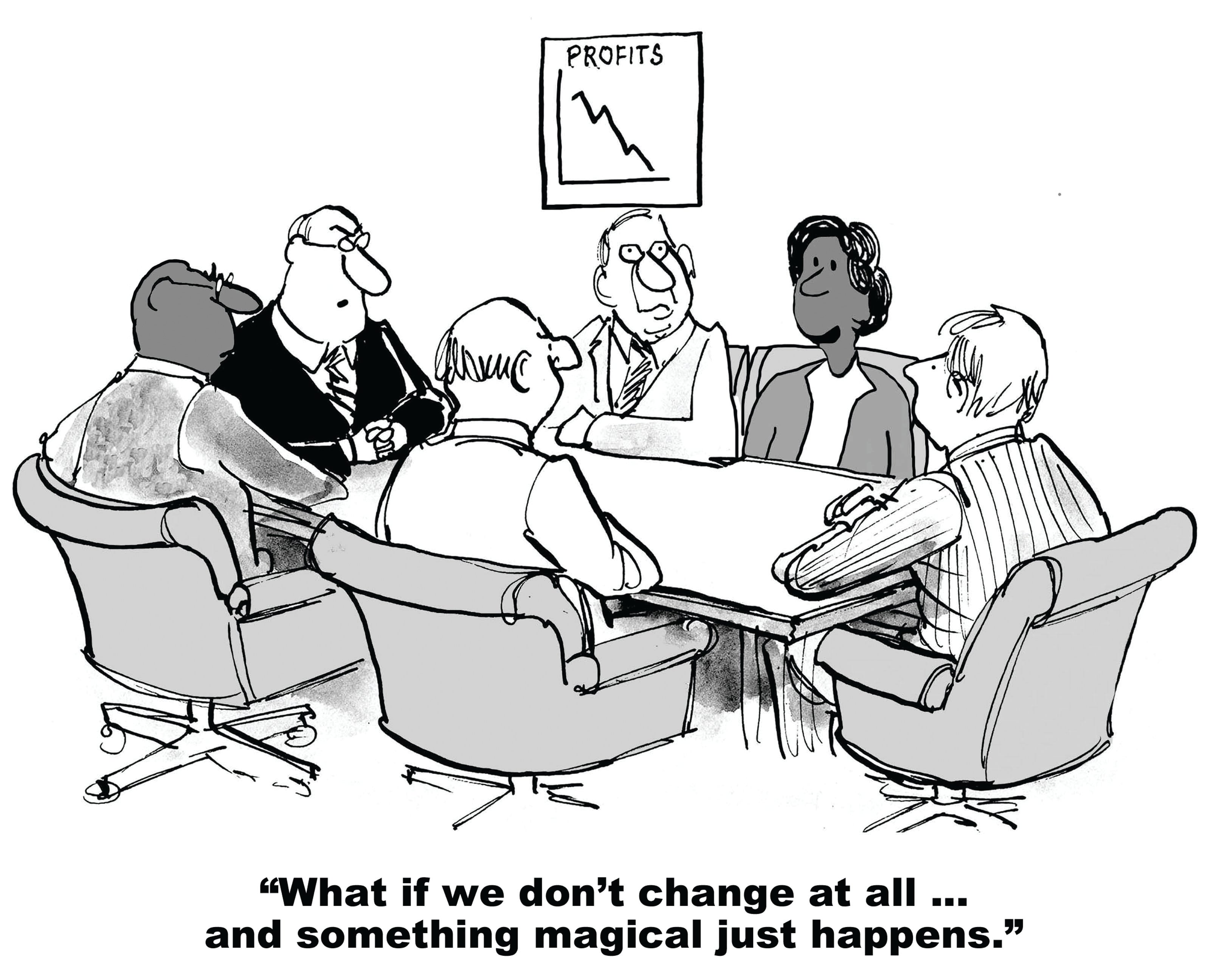A Bittersweet Goodbye
By Molly Finch Wielding a chainsaw while repairing ecosystems is win-win. Why we should all be offering invasive species removal

Every business goes through changes. As you grow, you need to add divisions or departments. You need to bring in additional leadership or change your software to something more robust or affordable.
You can go about this one of two ways: As a leader, you can make a unilateral decision and expect your team to live with it, or you can thoughtfully plan out your steps to keep your team engaged.
One path leads to resentment and turnover. The other path helps you succeed and thrive.
What is Change Management?
So what do I mean by “change management?” Change management is the process of implementing major changes to the structure or workflow of your business in such a way that your team willingly agrees to implement the change.
Said more simply, it’s how you handle the changes your business needs in a healthy way.
The first step to successful change management is simply recognizing that you can screw this up and that such an error can damage your business.

Why Should I Care?
There’s a lot at stake when changes are executed poorly. According to the Harvard Business Review, 70 percent of change initiatives fail. Those are betting odds that most businesses will screw this up.
When changes fail, several things happen (all of them bad) to your business. Primarily, you lose the trust of your workforce. This causes fear, which leads to grumbling, gossip and loss of enthusiasm for the work.
You also build resentment among your workers and managers. They become disillusioned and frustrated when they’re not consulted or included in the change management process. They may ultimately start looking for a workplace that shows them this type of respect.
These things lead to higher turnover during a poorly executed change, which hurts your bottom-line profitability in two ways. First, you have increased recruiting and training costs. When you experience turnover, you obviously incur expenses for your business. If you’re savvy enough to track and manage these expenses, you know exactly how much it costs to recruit and train a new employee to the point where they’re producing billable hours. That number increases (sometimes exponentially) if you lose a manager or executive rather than a front-line worker.
Secondly, you have diminished capacity to produce the work you’ve sold, causing longer lead times (backlogs) and less billable work being completed. With fewer hands to complete the jobs you’ve sold and fewer crew leaders and managers to supervise that work, your ability to deliver on jobs you’ve sold is drastically reduced. This leads to overtime (and burnout) for your remaining employees, longer wait times for customers expecting you to complete a job and fewer invoices being sent.
In short, your expenses go up while your cash flow is pinched. Never a recipe for a healthy business.
Do I have your attention now?
How do you avoid this? You can implement steps to encourage your team's participation (rather than resistance) in the proposed change. Managing your team and their expectations properly during these changes will pay massive dividends for you once the change is completed.
Properly executed change management can even help your team feel empowered and trusted. It can increase engagement and satisfaction at work.

The No. 1 Rule
We’ll dive into this in the next article in this series, but here’s a small preview, and the most important thing to remember when considering a change in your business:
You must be solving an actual business problem. Don’t make changes unilaterally or simply based on your workflow preferences.
Changing a workflow, company structure or software simply out of preference isn’t good enough. You must solve a commonly recognized problem in the business.
For example, restructuring your business to have landscape maintenance crews perform chemical treatments might improve your problem with efficiency. Your team, however, talks to you about how your routing is awful, and you could cut down on waste by improving that function first.
The point is that those doing the work daily recognize a problem. It’s just not the problem you thought. You are trying to solve a problem (efficiency) your way when that’s not the true problem. Your team members are already very efficient in the field, but the routing is the issue.
Talk to your team, discover the real issues and use the change management steps I will outline in the following articles to implement lasting solutions for your business.


By Molly Finch Wielding a chainsaw while repairing ecosystems is win-win. Why we should all be offering invasive species removal

Jeffrey Scott on Where You Should Focus Your Business

How Tariffs Could Affect Procurement in Landscaping